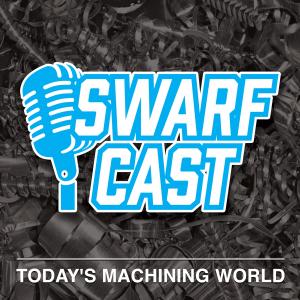Swarfcast

Machines vs Workers? With Noah and Lloyd–EP 249
Listen on your favorite podcast app using pod.link.
View the podcast at the bottom of this post or on our YouTube Channel
Follow us on Social and never miss an update!Facebook: https://www.facebook.com/swarfcast
Instagram: https://www.instagram.com/swarfcast/
LinkedIn: https://www.linkedin.com/company/todays-machining-world
Twitter: https://twitter.com/tmwswarfblog
*************
Link to Graff-Pinkert’s Acquisitions and Sales promotion!
*************
Interview Highlights What the Poll Results Really MeanWhen only 17% of respondents chose to invest in people over equipment, it reveals how the industry has essentially decided that finding, training, and retaining skilled workers is too difficult compared to buying another machine. But Lloyd argues we might be approaching this decision all wrong.
Lloyd’s Contrarian TakeWhile most shop owners automatically think “new machine” or “automation” when they have capital to invest, Lloyd suggests an option that I didn’t think to put in the poll: sales and marketing.
“People tend to use the answers that you propose for them,” Lloyd explains. “But I would like to propose another answer… sales and advertising and an attempt to get new clients or to expand the clients that you have.”
In an industry that’s notoriously bad at marketing itself, Lloyd suggests that $100,000 invested in finding new customers might generate more long-term value than any piece of equipment. I argue that Gen Z buyers want videos and social media advertising rather than traditional salespeople. But Lloyd counters with something even more old-school: actual in-person visits to potential clients or existing customers.
While phone calls might not work with younger buyers, Lloyd believes face-to-face relationship building could be the most neglected and potentially most valuable investment a shop could make.
Military Contracts Driving ChangeWe discuss how military contracts are forcing equipment decisions beyond simple cost considerations. New security requirements and quality standards mean some work simply can’t be done on older equipment anymore, regardless of the shop’s preferences.
But getting military work isn’t just about having the right equipment or submitting the lowest bid. Lloyd argues that political connections might be the key to landing big contracts for ammunition and defense work. “You know people. You contribute to people’s campaigns,” he explains. It’s about having a good network, knowing somebody who knows somebody, and being willing to go through the bureaucratic process to get certified.
This reality represents more than just equipment upgrades. It’s about understanding that success in defense manufacturing often depends as much on relationships and political connections as it does on machining capabilities.
Tariffs and UncertaintyThroughout our conversation, one theme keeps emerging: uncertainty. Whether it’s tariffs on raw materials, changing military requirements, or the ongoing challenge of finding skilled workers, manufacturers are making capital decisions in an environment where the rules seem to change weekly.
Lloyd points out that there’s actually been less indecision lately now that some things have been somewhat solidified, even with the caveat that they could change again. This temporary clarity, however fragile, has helped our business pick up over the last month and a half.
But the tariffs themselves might be doing more damage to American manufacturers than to China. Lloyd argues that China, as the low-cost producer of steel in the world, can absorb tariffs without too much pain. Meanwhile, American shops face significant cost increases on raw materials like steel and aluminum, most of which is imported. The result? Tariffs may be hurting the very manufacturers they’re supposed to help.
The underlying volatility in trade policy remains, and many companies are still paralyzed by the constant flux, which may be the biggest threat to growth of all.
Questions: What would YOU spend $100K on in your shop? Are you investing more in equipment or people this year?






 Visit Podcast Website
Visit Podcast Website RSS Podcast Feed
RSS Podcast Feed Subscribe
Subscribe
 Add to MyCast
Add to MyCast